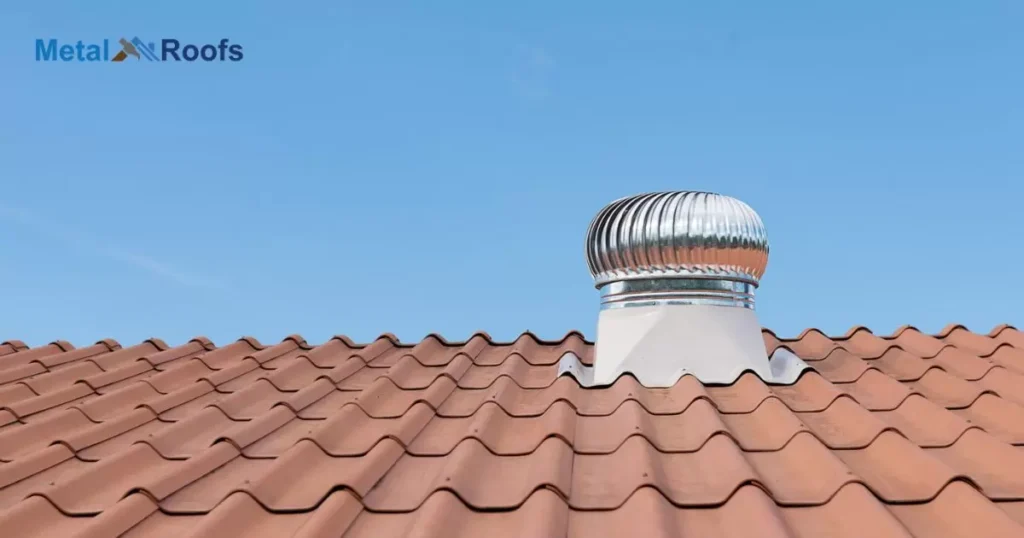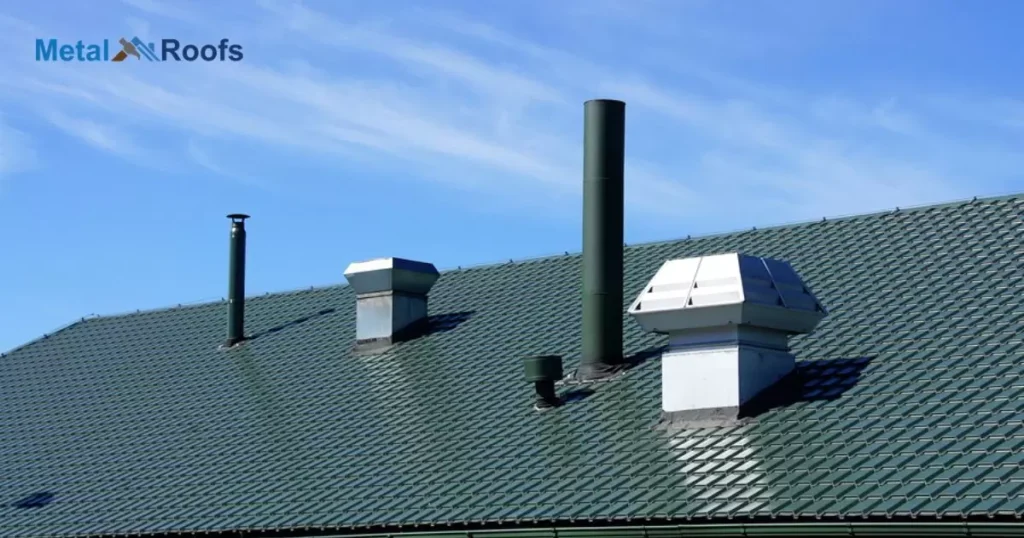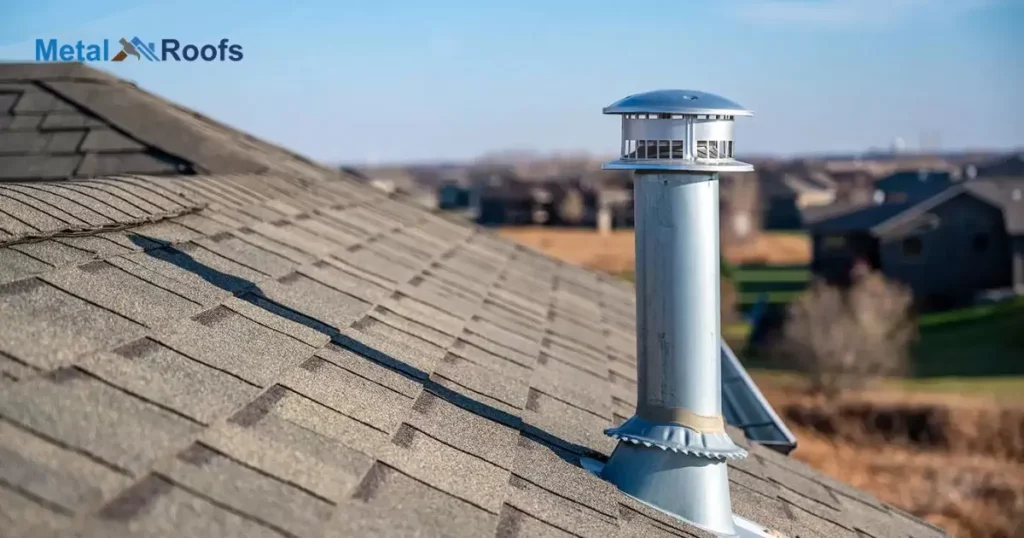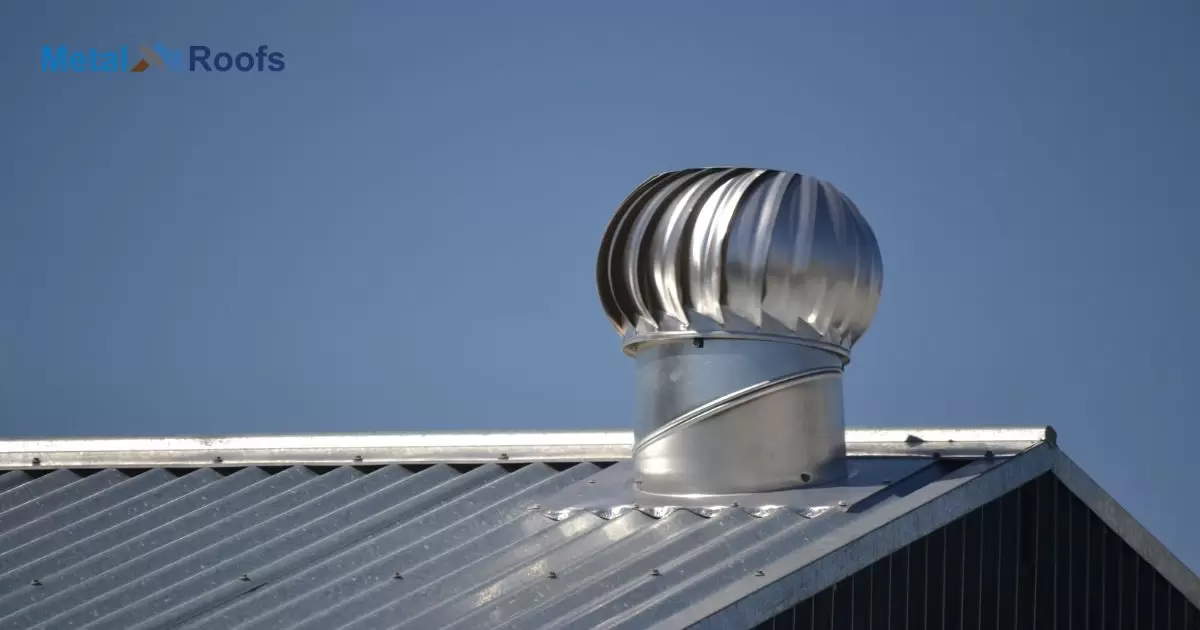Vents allow air flow to prevent heat and moisture buildup under the metal roofing. Proper ventilation helps prevent corrosion, rot, ice dams, and helps attic insulation work better. Vents come in different styles like ridge vents, gable end vents, turbine vents, and roof louvers.
Proper ventilation is key for metal roofs. Moisture and heat buildup causes problems. Installing vents like ridge vents, turbine vents, and gable vents allows air flow. But how to install vents on a metal roof correctly? Proper installation ensures vents work right, preventing moisture issues.
Installing skylights between trusses requires careful attention to detail. Installing vents on metal roofs keeps things dry. But doing it wrong causes leaks. Key steps are: measure and mark vent locations, cut openings, install flashing, attach vents, and Installing Skylights Between Trusses. Proper sealing is vital. Follow manufacturer instructions for best results. Taking time to do it right prevents issues later.
Key Takeaways
- Ventilation is vital for metal roof health.
- Choose the right vents for your design.
- Measure carefully for optimal airflow.
- Seal openings with flashing to prevent leaks.
- Regular maintenance ensures ongoing performance.
Understanding The Importance Of Ventilation In Metal Roofing
Proper ventilation is crucial for metal roofing. It helps regulate temperature and moisture levels in the attic. Without ventilation, heat and moisture can build up, leading to issues like mold and rot.
Good ventilation extends the lifespan of a metal roof. It prevents damage caused by moisture buildup and excessive heat. By allowing air to circulate, ventilation keeps the roof and the entire structure healthy and durable.
What Are The Different Types Of Vents For Metal Roofing?

Ridge vents: Installed along the roof ridge to release hot air.
Soffit vents: Positioned under eaves to draw in cool air.
Static vents: Stationary vents that assist in air circulation.
Turbine vents: Utilize wind power to extract heat from the attic.
Selecting the right vent type is critical for maintaining proper ventilation and controlling moisture in metal roofing systems.
Determining The Ventilation Needs Of Your Metal Roof
When deciding on ventilation for your metal roof, start by assessing your attic space. Measure its size and consider factors like insulation and climate. This helps determine how much airflow your roof needs.
Next, choose the right type of vents. Options include ridge vents, turbine vents, and soffit vents. Pick what works best for your roof design and ventilation requirements. Proper placement of vents is crucial for effective airflow.
Follow manufacturer guidelines and local building codes. Ensure vents are installed near the ridge for exhaust and along the eaves for intake. This ensures balanced ventilation throughout your attic space.
Key Considerations Before Installing Vents On A Metal Roof
Before installing vents on a metal roof, assess the type of ventilation needed. Measure accurately and plan the placement of vents accordingly. Ensure the roof surface is clean and free of debris before cutting openings.
Choose the right type of vent based on your roof design and ventilation requirements. Follow manufacturer guidelines for spacing and placement. Install flashing around the vent openings for a watertight seal. Apply roofing sealant to seal edges and prevent water infiltration.
Preparing The Roof For Vent Installation: Essential Steps
Preparing the roof for vent installation involves several essential steps. First, clean the roof surface thoroughly to remove any debris or dirt. Next, measure and mark the locations for the vents according to your ventilation plan.
Once the locations are marked, carefully cut openings in the metal roof using the appropriate tools. Install flashing around the perimeter of the vent openings to create a watertight seal.
Then, place the vents into the openings and secure them in place with screws or fasteners. Finally, seal the edges of the vents with roofing sealant to prevent water infiltration.
Choosing The Right Location For Vents On Your Metal Roof

Choosing the right location for vents on your metal roof is crucial. Look for areas near the ridge for exhaust vents. Along the eaves or soffits, place intake vents. Proper placement ensures efficient ventilation.
Installing Ridge Vents On A Metal Roof
First, measure your roof carefully. Plan where to put the vents. Use chalk to mark the spots. Cut openings in the metal roof. Be precise to avoid damage.
Install flashing around the edges. It keeps water out. Put the ridge vents in place. Screw them down tight. Seal the edges with roofing sealant. Test for leaks afterwards. Check everything thoroughly.
Installing Soffit Vents On A Metal Roof
Installing soffit vents on a metal roof is crucial for airflow. Measure and mark where vents will go. Cut openings carefully. Install flashing for waterproofing. Put vents in place. Seal edges tightly. Test for leaks. Ensure proper installation.
Installing Box Vents On A Metal Roof
To install box vents on a metal roof, start by choosing the right type of vent. Measure and mark the locations where the vents will go. Cut precise openings in the roof for the vents. Install flashing around the edges for a tight seal.
Place the vents into the openings carefully. Secure them in place with screws or fasteners. Seal the edges with roofing sealant to prevent leaks. Test for any signs of leaks or gaps. Double-check that everything is securely installed.
Installing Turbine Vents On A Metal Roof
Install turbine vents near the ridge. Measure and mark accurately. Cut opening with metal blade. Install flashing for the seal. Place the vent, secure with screws. Seal edges with roofing sealant. Test for leaks. Inspect thoroughly.
Installing Gable Vents On A Metal Roof
When installing gable vents on a metal roof, measure the roof’s dimensions first. Use chalk to mark where vents will go. Cut openings carefully with a metal cutting tool. Install flashing around the edges for a watertight seal.
Place vents securely in the openings. Apply roofing sealant around the edges to prevent leaks. Check for any gaps or leaks after installation. Ensure vents are properly sealed and functional.
Ensuring Proper Sealing And Insulation Around Metal Roof Vents
When installing metal roof vents, sealing and insulation are crucial. Start by applying sealant around the edges of the vents. This prevents water leaks and maintains roof integrity. Then, ensure proper insulation to regulate temperature and moisture levels.
Insulation keeps the attic space comfortable and prevents energy loss. By focusing on sealing and insulation, you ensure efficient ventilation and protect your home from potential issues.
Common Mistakes to Avoid When Installing Vents On Metal Roofing
| Mistake | Description |
| Incorrect sizing | Holes too large/small can cause leaks or poor ventilation. |
| Poor sealing around edges | Inadequate sealing leads to water penetration and roof damage. |
| Ignoring manufacturer guidelines | Not following instructions can result in inefficient ventilation. |
| Improper vent placement | Incorrect placement disrupts airflow, leading to moisture issues. |
| Neglecting maintenance | Lack of regular checks leads to clogs and reduced effectiveness over time. |
| Incompatible materials/methods | Using wrong materials can compromise roof and vent integrity. |
When installing vents on metal roofing, avoid cutting holes too large or too small. Improper sizing can lead to leaks or inadequate ventilation. Always measure accurately and follow manufacturer guidelines for vent placement.
Another common mistake is neglecting to seal around the vent edges properly. Inadequate sealing can allow water to penetrate the roof, causing damage over time. Ensure a watertight seal using appropriate sealant or roofing cement.
Maintaining and Inspecting Metal Roof Vents
Maintaining and inspecting metal roof vents is crucial for optimal ventilation. Regular checks ensure they’re free from debris and damage. Clean vents help prevent moisture buildup and extend the lifespan of your roof.
Inspecting vents involves looking for signs of rust or corrosion. Replace any damaged vents promptly to prevent leaks. Proper maintenance ensures your metal roof vents continue to function effectively, keeping your home comfortable and protected.
Exhaust Vent for Metal Roof

Exhaust vents on metal roofs help release hot air from the attic. They prevent moisture buildup, keeping the roof in good condition. Choose the right type of exhaust vent for your metal roof.
Ridge vents are popular for metal roofs, installed along the roof’s peak. Turbine vents are another option, using wind power to pull air out. Proper installation ensures effective ventilation for your metal roof’s longevity.
Frequently Asked Questions
How should roof vents be installed?
Roof vents should be installed strategically for optimal ventilation. Place them near the ridge for exhaust and along the eaves or soffits for intake.
How to install an attic vent on a metal roof?
Measure and mark the vent location, then cut an opening in the metal roof. Install flashing, secure the vent, and seal edges to prevent leaks.
What is the easiest way to vent a roof?
Measure and mark the vent location, then cut an opening and secure the vent with flashing and sealant for a watertight installation on your metal roof.
Conclusion
Vents on metal roofs are important. They let air circulate, preventing heat and moisture buildup. Various vent types each work slightly differently. Proper installation ensures vents work as designed. Taking time to measure, cut, flash, and seal correctly now saves headaches later.
Following manufacturer instructions during vent installation is key. Making precise openings and properly sealing is vital. Ridge vents, turbine vents and other vent types all need proper air flow to work right. Taking a methodical approach ensures the vents will adequately ventilate for the long run.











